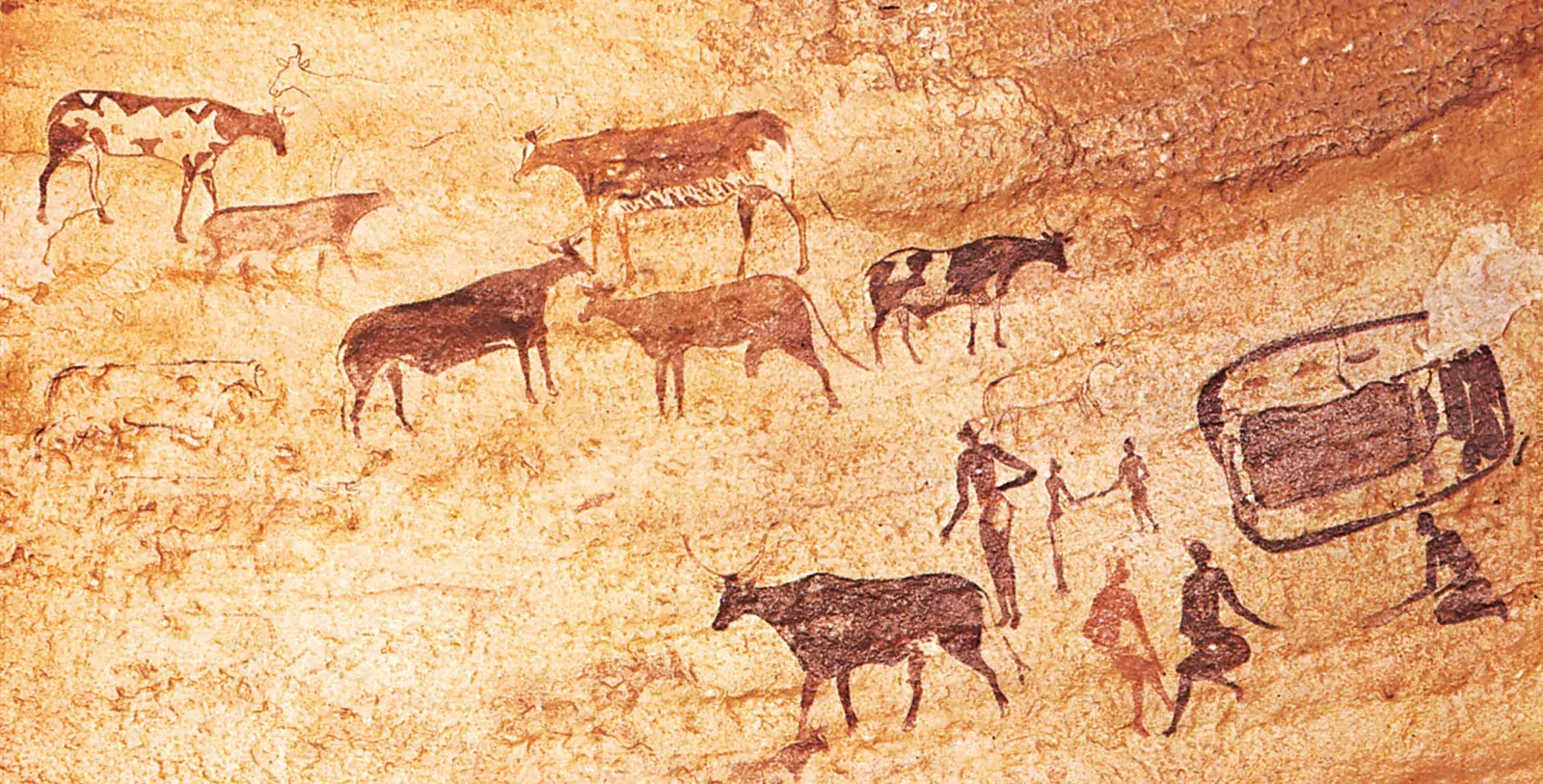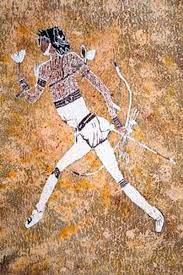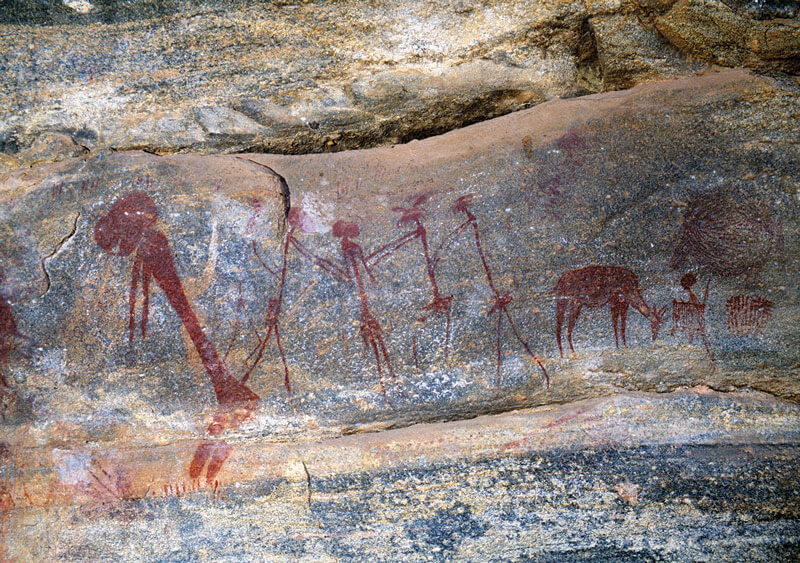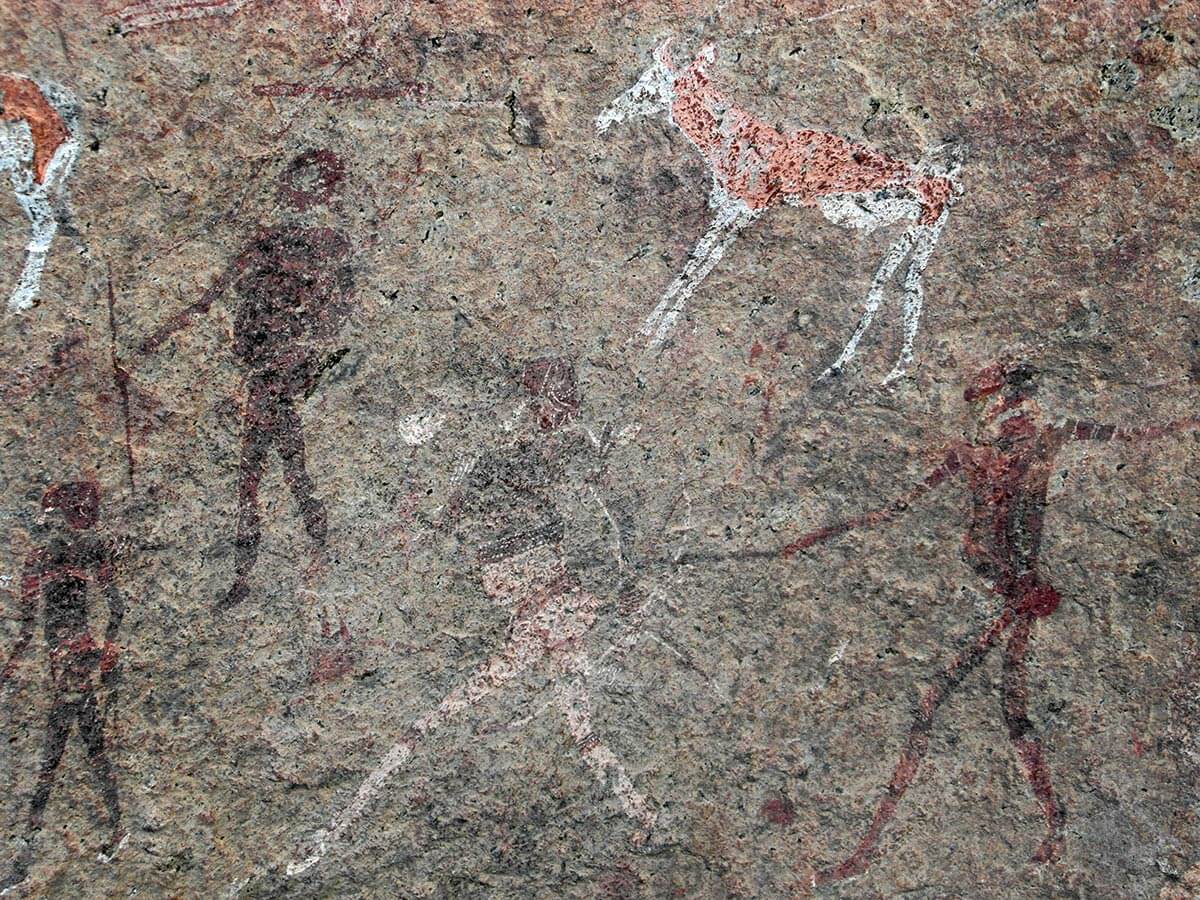Picture this; before people had smartphones or even paper, they used rocks as their canvas. African rock art is a bit like the Instagram of the ancient world, except it's etched and painted onto rocks and caves instead of screens. It's like a gallery that's been around for thousands of years, showcasing the creativity and stories of Africa's early people.
It includes drawings, paintings, and engravings on rocks, cave walls, and cliffs. These artworks depict a wide range of subjects like animals, humans, symbols, and scenes from everyday life.
They are a testament to the rich cultural and artistic heritage of the continent and serve as a visual record of the beliefs, customs, and experiences of ancient African civilizations.
The style and content of these rock arts vary across different regions. They reflect the diversity of cultures and traditions that have flourished throughout Africa.
Welcome to the mesmerizing world of African rock art. Let's uncover some examples from different corners of this vast continent.
Tassili-n-Ajjer

Located in Algeria, the site presents the relationship between humans and the environment. It stands out as one of the world's most significant collections of prehistoric cave art, with over 15,000 drawings and engravings.
They show recordings of the climate changes, the migratory patterns of animals and the evolution of human life on the edge of the Sahara. This remarkable journey through time spans from 6000 BC to the first centuries of the present era.
The geological formations in this area are nothing short of spectacular, with weathered sandstones creating 'rock forests.'
Laas Geel Cave Art

Thought to be some of the most vivid rock art in Africa, Laas Geel cave art is found in the semi-autonomous region of Somaliland.
The art here transports us back in time to the lives of early pastoralists who inhabited the region.
These unique paintings depict humans, animals, and abstract patterns, showcasing daily life, spiritual beliefs, and the remarkable wildlife that coexisted with these ancient communities.
What sets Laas Geel apart is the use of vibrant and well-preserved colours. Pigments made from natural materials, like iron and manganese, create a stunning palette of reds, oranges, yellows, and whites. The intensity of these colours is astounding, especially considering their age.
Brandberg Mountain

Imagine hiking up a mountain and stumbling upon an art gallery. That's what it's like at Brandberg Mountain, Namibia.
Brandberg Mountain is home to an exceptional collection of rock engravings. These engravings, believed to be the work of the San people, are like a portal to the past. They reveal the lives, beliefs, and creativity of early inhabitants.
One of the most intriguing figures at Brandberg is the enigmatic "White Lady." Despite the name, this painting is not a lady. It is a captivating and somewhat mysterious figure. It's created with white pigment.
It stands as a focal point of curiosity and debate among researchers. The "White Lady" is a reminder that these rocks hold stories, some of which we may never decipher.
Beyond its art, Brandberg Mountain is a stunning natural landmark. The red granite mountain rises from the desert floor, creating a dramatic backdrop to the ancient art etched into its rocks.
Kondoa rock art

Tucked away in Tanzania, Kondoa Rock Art stands as a testament to the rich history and creative spirit of Africa's early inhabitants.
The Kondoa Rock Art site is home to a breathtaking collection of over 150 rock shelters adorned with paintings.
These extraordinary rock shelters reveal a treasure trove of prehistoric artwork. They offer a unique glimpse into the lives and beliefs of ancient communities.
These ancient artworks are believed to be the work of early hunter-gatherer communities and span thousands of years. The art depicts a wide range of subjects, including human figures, animals, and intricate symbolic designs.
********
African rock art is like a window into the past. It's like a real-life time machine, connecting us with the people who walked this Earth long before smartphones and tablets. So, the next time you see a rock, remember, it might just be hiding a secret from the past. Keep exploring, keep discovering, and keep those imaginations alive!
******************
Whenever you need translation for any African language, help is available here.
Remember, it is time to tell our stories.
Till next time.
Join the Lughayangu Community!


